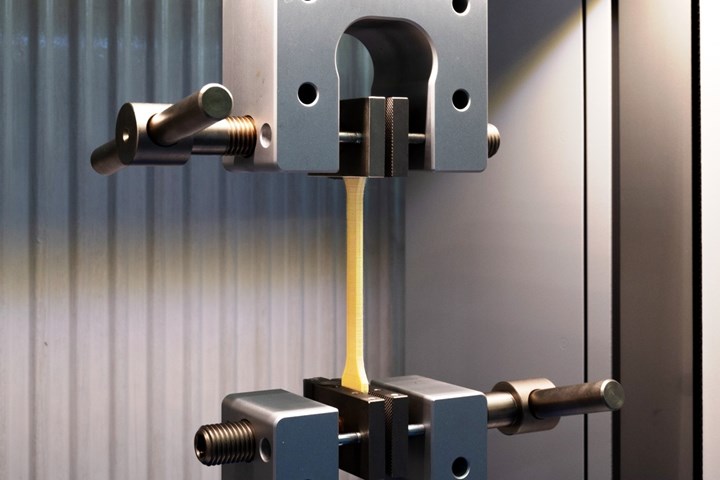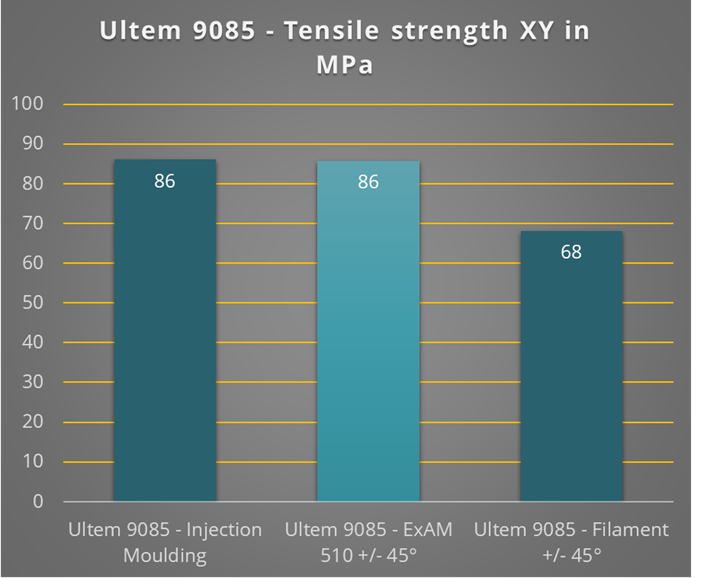Printing From Pellet for Lower Cost, Higher Tensile Strength
Material qualification testing highlights advantages of skipping the filament in printing polyetherimide parts for aerospace applications.
released results of its material qualification testing of Sabic’s Ultem 9085, a polyetherimide (PEI), using 3D printing from pellet. AIM3D’s ExAM 510 printer uses the composite extrusion modeling process, which uses standard pellets rather that the filament required by other platforms.

A specimen is tested for tensile strength. Strengths in both the XY and XZ directions were higher when specimens were produced from pellets. Photo Credit: AIM3D Gmbh
The ability to print directly from a pellet is expected to provide a cost savings of up to 7 times compared with filament-based additive manufacturing. Results from AIM3D’s testing indicate that tensile strength is higher than achieved with filament printing and much closer to injection-molded parts from the same material. Standard deviations in the data were described as low, indicating that the process has high stability. Elongation at break was also higher for the pellet-printed material compared with filament printed.

Test results showed specimens were stronger when produced from pellet and comparable to those produced by injection molding. Photo Credit: AIM3D Gmbh
AIM3D also describes increases in build speeds with its process (up to 250 cubic cm per hour), reduced energy use, and shorter time-to-market. Sabic’s Ultem PEI is suited for aerospace applications, with low flammability and high strength-to-weight ratio.
Related Content
-
Insight Polymers & Compounding Unveils New Conductive Products Line
The new conductive products line will also be produced for injection molding and extrusion.
-
The Connector Conundrum: 3D Printed Mold Tooling’s Role in Innovation
ReelView Fishing faced an electronics obstacle in the development of its new technology for underwater video. Additive manufacturing for moldmaking allowed for the speed necessary to iterate to a solution. How inventors and invention will benefit from new ways of obtaining production-ready tooling.
-
420 Stainless Steel Now Qualified With TrueShape 3D Printing Technology
NPE2024: Mantle's additive manufacturing technology is designed for precision tooling.


